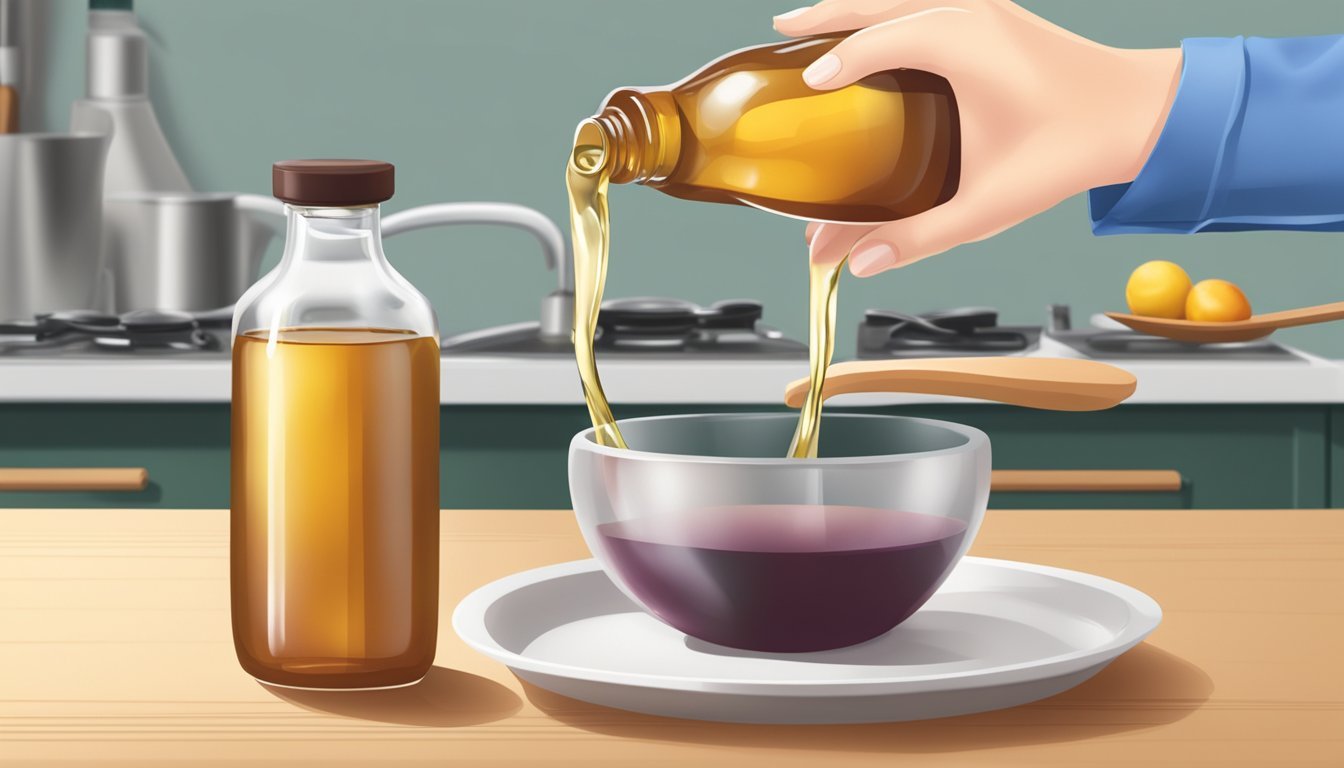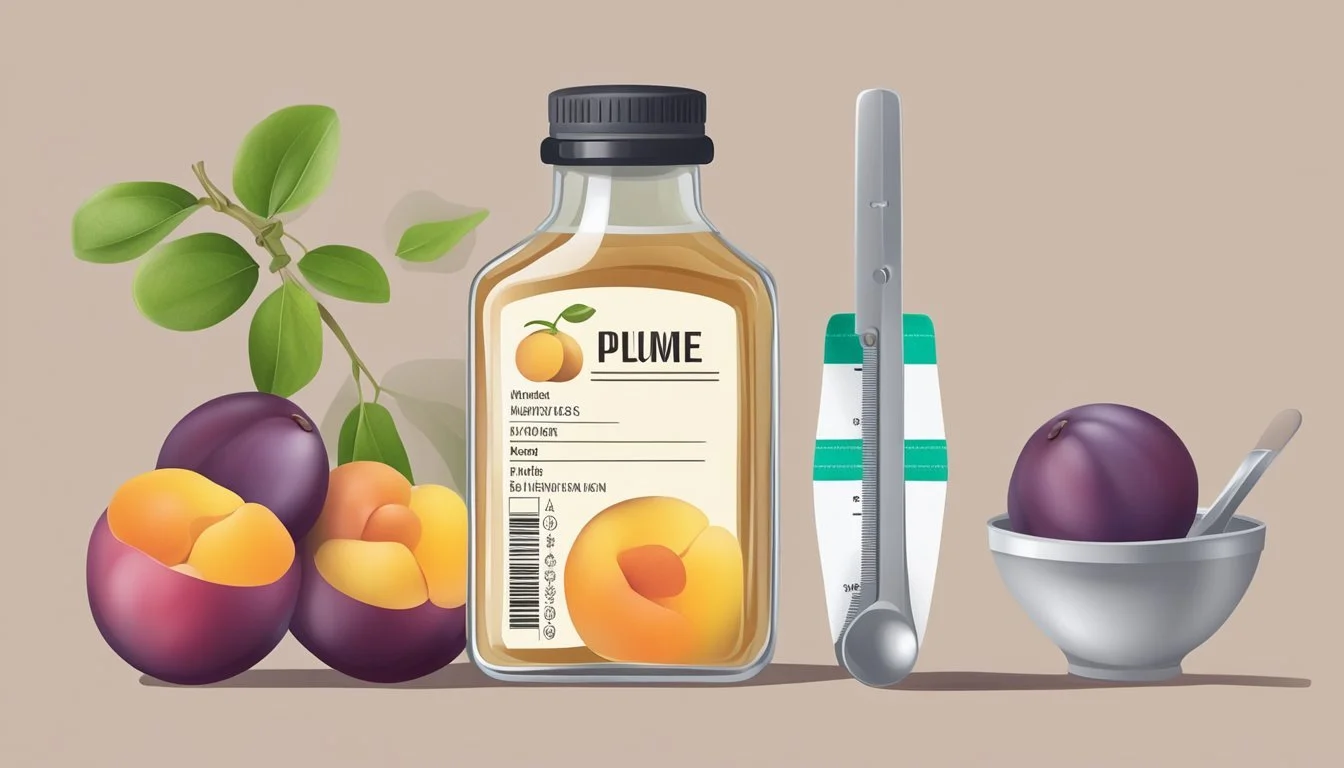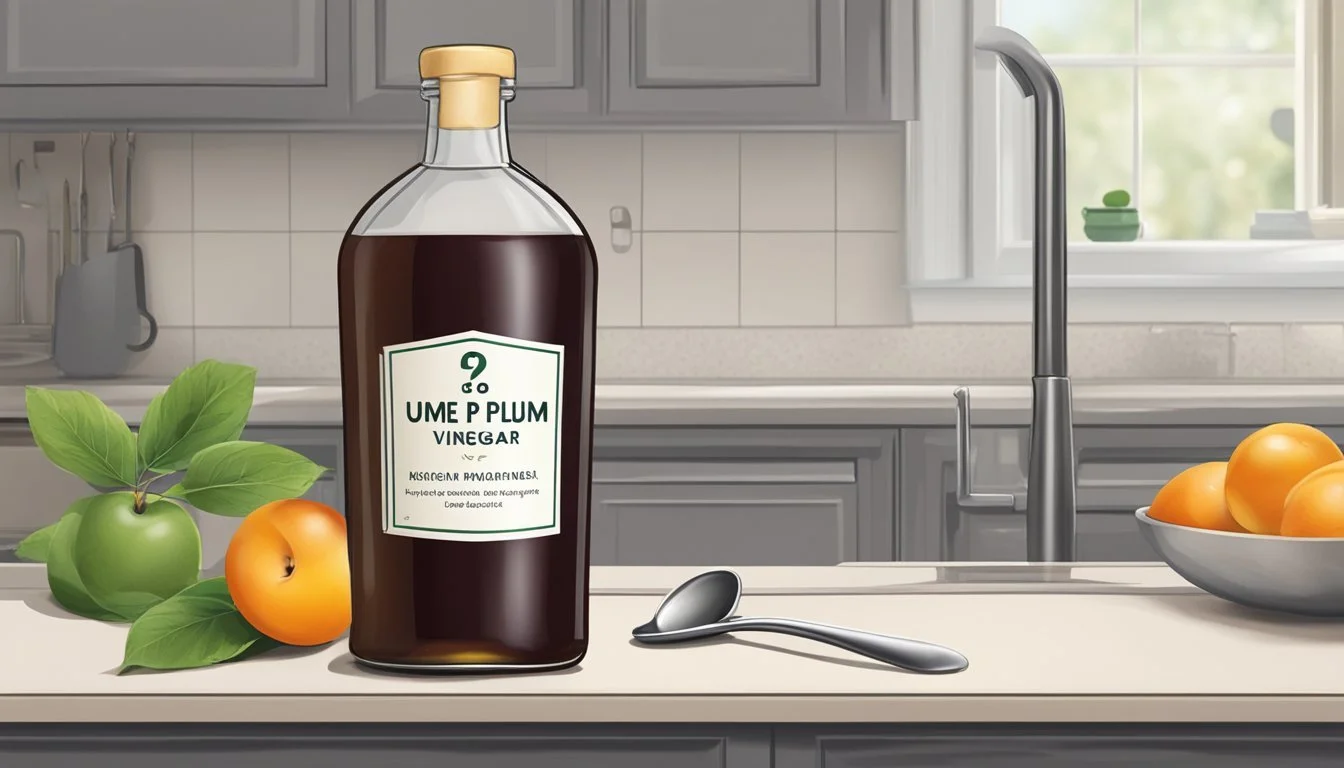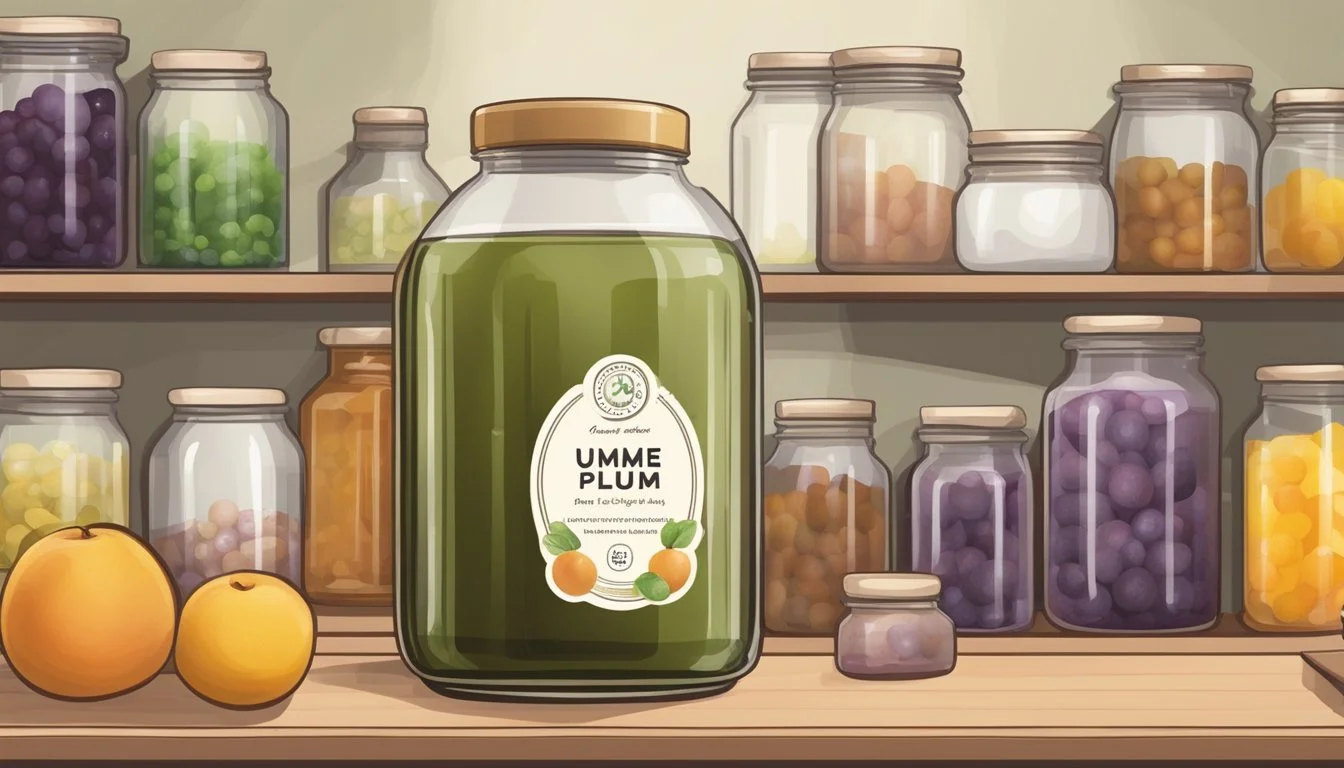How Much Ume Plum Vinegar Per Day Is Too Much
Daily Limits Explained
Ume plum vinegar, a byproduct of pickled ume plums, is celebrated for its tart and salty taste that can enhance various dishes. Known for its versatility, it can be used in salad dressings, marinades, and to give dishes a flavorful boost. With the rising interest in fermented foods for health, many have incorporated ume plum vinegar as a staple condiment in their diet. However, due to its high salt content and acidity, there is a growing concern about the appropriate daily intake.
While ume plum vinegar is associated with several health benefits, such as promoting digestion and possibly helping to regulate blood pressure, moderation is key. Consuming it in excess could lead to potential adverse effects, particularly for those with a sensitivity to sodium or with certain health conditions. Individuals must consider the balance between the advantages of incorporating ume plum vinegar into their diet and the risks of excessive consumption.
Origins of Ume Plum Vinegar
Ume plum vinegar, a staple in Japanese cooking, originates from the traditional pickling process of umeboshi plums. Ume, often referred to as Japanese apricots, are harvested when still unripe and firm. It's during this stage that the plums possess the tartness necessary for making both umeboshi and its accompanying vinegar.
Pickling Process:
Selection: Choose firm, green ume plums.
Cleansing: Meticulously wash the selected plums.
Mixing: Plums are then salted and sometimes combined with red shiso (beefsteak) leaves.
Aging: The mixture rests for a certain period, during which the vinegar is formed.
Red shiso imparts a distinct ruby red hue to the vinegar, enhancing its visual appeal and adding a subtle flavor note. Significantly, the vinegar results from the juices drawn out during the umeboshi-making process. The liquid, rich in organic acids and probiotics, is separated out to become the umeboshi vinegar, or ume plum vinegar, as commonly known.
Traditionally, this product plays a crucial role in Japanese gastronomy. It is favored not only for its taste but also for its purported health benefits. Historical applications range from seasonings to medicinal uses.
When using ume plum vinegar in modern culinary practices, chefs and home cooks alike appreciate its ability to enrich flavor profiles through its tangy, salty characteristics. It’s versatile in use, from dressings to marinades, reflecting the depth of its historical roots in the diverse palate of Japan’s cuisine.
Nutritional Profile of Ume Plum Vinegar
Ume plum vinegar, derived from Japanese apricot, possesses unique nutritional components that may enhance a diet when consumed in moderation. Its composition includes a blend of vitamins, minerals, and other health-promoting compounds, while also containing notable levels of salt.
Vitamins and Minerals Content
Calcium: Although present in minimal quantities, ume plum vinegar contains calcium, essential for bone health and muscular function. Potassium: It acts as an electrolyte, assisting in maintaining proper heart function and muscle contractions.
Macro-Nutrient Information
Calories: Ume plum vinegar is low in calories, making it a diet-friendly condiment. Protein and Fiber: Negligible in protein and dietary fiber, it is not a significant source of these macronutrients.
Health-Enhancing Compounds
Citric Acid: It’s a key component that may aid in metabolism and energy production. Polyphenols and Antioxidants: Ume plum vinegar is enriched with polyphenols and antioxidants which contribute to its healthful properties, including potential anti-bacterial effects.
Salt and Preservative Levels
Sea Salt: Sea salt is a fundamental ingredient in the production of ume plum vinegar, leading to a higher salt content, which should be consumed cautiously. Preservatives: Traditional recipes may lack artificial preservatives, but it’s crucial to check product labels for any added chemicals.
Health Benefits and Risks
This section explores how ume plum vinegar may influence human health, highlighting its digestive and cardiometabolic benefits, antimicrobial properties, and the potential risks and side effects associated with its consumption.
Digestive Health
Ume plum vinegar has been noted for its potential to promote digestive regularity. It may alleviate constipation by acting as a mild laxative, improving gastrointestinal movement. Additionally, the acidity in the vinegar can stimulate the production of stomach acids, thus aiding in digestion.
Cardiometabolic Health
Consumption of ume plum vinegar might influence blood sugar levels positively, helping with stabilization. Such properties could be beneficial for individuals aiming to manage their blood sugar. However, current evidence is not substantial enough to fully endorse its use for cardiometabolic health.
Antimicrobial Effects
The vinegar possesses anti-bacterial properties that could support oral health by reducing harmful bacteria in the mouth. Its capacity to fight free radicals suggests that it may protect against liver damage and fortify the body's defense against infections like colds.
Potential Risks and Side Effects
While ume plum vinegar provides several health benefits, overconsumption can lead to adverse effects such as gastrointestinal upset and dental erosion due to its acidity. Individuals with preexisting liver disease should consult a healthcare provider before regular intake.
Impact on Specific Conditions
Studies have indicated that extracts from the ume fruit may have effects on cancer cells, such as inhibiting the growth of liver and pancreatic cancer cells. However, the application of ume plum vinegar for detoxification or addressing hangovers lacks scientific consensus and requires more research to validate these claims.
Culinary Uses of Ume Plum Vinegar
Ume Plum Vinegar, with its distinct sour and salty taste, offers versatility in Japanese cuisine and creative modern dishes. It elevates the flavors of various ingredients ranging from simple rice to complex marinades.
Traditional Japanese Applications
Japanese cuisine heavily relies on the unique flavors of fermented products. Ume plum vinegar, a byproduct of umeboshi (pickled plums) production, is a staple. It's used to flavor rice balls commonly known as onigiri, enhancing the taste of plain white rice. Additionally, it imparts a tangy zest to chazuke, a comforting dish where tea is poured over cooked rice.
Traditional Use Description Rice Ball (Onigiri) Seasoning Enriches the rice taste, often paired with umeboshi plum. Chazuke Enhancement Adds a tangy flavor to the warming tea-over-rice dish. Pickles Acts as a pickling agent for various vegetables, contributing to their preservation and taste.
Modern Culinary Creativity
Chefs outside Japan have embraced ume plum vinegar, incorporating it into innovative condiments and dips. The acidity and sweetness make it a brilliant addition that can balance flavors in western-style dishes, including vinaigrettes. Also, creative uses in sushi (What wine goes well with sushi?) preparation have been seen, adding a twist to traditional flavors.
Condiments & Dips: Enhances spreads and dipping sauces by adding depth with its tanginess.
Sushi Elevation: Modern sushi dishes sometimes include this vinegar for an extra flavor dimension.
Homemade Ume Condiments
One can create homemade umeboshi and umeboshi paste, using ume plum vinegar as part of the fermenting brine, often along with red shiso leaves. This results in a vibrant condiment that can be used as a robust flavor enhancer or as a standalone side dish.
Homemade Ume Condiments:
Umeboshi Plums: Consume as a side dish or mash into a paste.
Ume Plum Sauce: Combine umeboshi paste with vinegar for a tangy sauce.
Suggested Pairings and Recipes
Ume plum vinegar acts as a beautiful partner to vegetables, lending its lively sour note to salad dressings and marinades.
Recipe Pairings:
Salad Dressings: Mix with oil and additional flavorings for a novel dressing twist.
Marinades: Tenderizes meat while infusing it with a unique, fruity tartness.
By integrating ume plum vinegar in various culinary applications, from traditional Japanese dishes to experimental condiments and dips, one can explore the vast, flavorful potential of this unique ingredient.
Understanding Ume Plum Vinegar Consumption
Ume Plum Vinegar, derived from the brine used in pickling ume plums, is a tart and salty condiment with a distinctive sour flavor. When considering incorporating it into your diet, it's essential to be aware of recommended daily amounts and signs of overconsumption due to its high salt content.
Recommended Daily Amounts
There is no official guideline for the daily consumption of ume plum vinegar, but due to its high sodium content and intense flavor, it is best used sparingly. A conservative approach would be to start with one teaspoon per day, either diluted in water or used as a seasoning for dishes. For those who use it as part of a dressing or as a condiment, limiting the consumption to one tablespoon spread throughout the day should be safe for most individuals. It's important to adjust based on personal dietary needs and any existing health concerns, especially related to sodium intake.
Signs of Overconsumption
Excessive intake of ume plum vinegar can result in signs of overconsumption, primarily due to its salt content. Symptoms to be aware of include:
Increased thirst and dehydration: The high sodium levels can cause the body to retain water.
Elevated blood pressure: Those with hypertension should be particularly cautious as salty foods like ume plum vinegar may exacerbate the condition.
Digestive upset: Although ume plum vinegar is sometimes hailed for its digestive benefits, too much may lead to stomach discomfort or acid reflux.
Individuals with a history of liver issues should exercise caution when consuming products high in sodium, like ume plum vinegar. While some advocate for its benefits, such as acting as a hangover cure, these claims should be approached with skepticism and balanced against potential risks. As with any powerhouse food or supposed superfood, moderation is key.
Preservation and Storage Recommendations
When storing ume plum vinegar, it is essential to adhere to specific guidelines to maintain its quality and prolong its shelf life. The preservation of this unique condiment involves a few key practices that ensure its flavors and beneficial properties remain intact over time.
Firstly, ume plum vinegar should be stored in a cool, dark place. Exposure to heat and light can deteriorate the quality of the vinegar, so a pantry or a cupboard away from any heat sources is ideal. The storage location should also be dry to prevent any potential contamination or spoilage.
Refrigeration is recommended to extend the shelf life of ume plum vinegar. While it can be preserved at room temperature, placing the bottle in the refrigerator will help keep its flavor and acidity at optimal levels.
Here's a simple table outlining the recommended storage practices:
Condition Shelf Life Room Temperature Up to 6 months Refrigerated Up to 1 year
Additionally, ume plum vinegar should be stored in an airtight container. Exposure to air can lead to oxidation, which may affect the taste and acidity. It is best to use the original bottle if it can be resealed effectively, or transfer it to another airtight container if the original packaging does not seal properly after opening.
To summarize, the key takeaways for preserving ume plum vinegar are:
Store in a cool, dark, and dry place
Refrigerate to extend shelf life
Keep in an airtight container to prevent oxidation
By following these storage guidelines, one can ensure that their ume plum vinegar maintains its character and remains safe for consumption for the duration of its shelf life.
Shopping Guide for Ume Plum Vinegar
When shopping for ume plum vinegar, consumers should focus on quality, authenticity, brand reputation, and cost to make an informed purchase decision.
Choosing Quality Products
Consumers should look for ume plum vinegar that has been created through natural fermentation processes, indicating it was made without the use of artificial additives or chemicals. Quality products often have a clear ingredients list, typically including ume plums and sea salt, and may also mention red shiso leaves, which contribute to the traditional crimson color.
Identifying Authentic Ume Plum Vinegar
Authenticity can be discerned by the inclusion of ume plums in its production. Genuine ume plum vinegar is the brine left over from pickling ume plums to make umeboshi (pickled plums). The presence of red shiso leaves should also be listed since it's a traditional ingredient used to give the vinegar its signature red hue. Eden Foods Ume Plum Vinegar is one example of an authentic product in the market.
Popular Brands and Where to Find Them
Several brands earn recognition for their quality and authenticity:
Eden Foods Ume Plum Vinegar: Known for adhering to traditional production methods.
Mitsukan Ume Vinegar: A well-known Japanese brand.
Clearspring Organic Ume Plum Seasoning: Offers an organic option.
These brands can be found in health food stores, Asian markets, or online platforms such as Amazon.
Cost Considerations
Prices for ume plum vinegar can vary widely based on brand, size, and place of purchase. A bottle could range from $5 to $15. Factors influencing cost include organic certification, import fees if bought outside of Japan, and brand reputation. Consumers should compare prices across several retailers to find the best deal while still ensuring product quality.
Conclusion
When incorporating ume plum vinegar into one’s diet, moderation is key due to its potent flavor and high salt content. Umeboshi plum, a traditional Japanese pickled fruit, serves as the source of this vinegar, which carries some of the benefits of the plums themselves. These benefits usually include the presence of potassium, fiber, and vitamins that are inherent to the fruit.
Daily intake should be limited to small amounts; typically, a few teaspoons diluted in water or used in dressings is sufficient.
Individuals with hypertension or those on a sodium-restricted diet should be particularly cautious due to the vinegar's sodium content.
The dried and pickled ume fruit has been a staple in Japanese cuisine not only for its flavor but also for its purported health properties. Using umeboshi plum in various forms, from the whole fruit to the seasoned vinegar, should be approached with the understanding that it is a condiment rather than a primary food source.
It is essential to recognize that while ume plum vinegar may have beneficial properties, these should not be overstated nor should the vinegar be consumed in excess. To reap umeboshi plum benefits, one could incorporate them into their diet in small, measured quantities, ensuring they complement a balanced diet rather than dominate it.
In summary, enjoy the unique taste and benefits of ume plum vinegar in moderation to avoid excessive intake.










